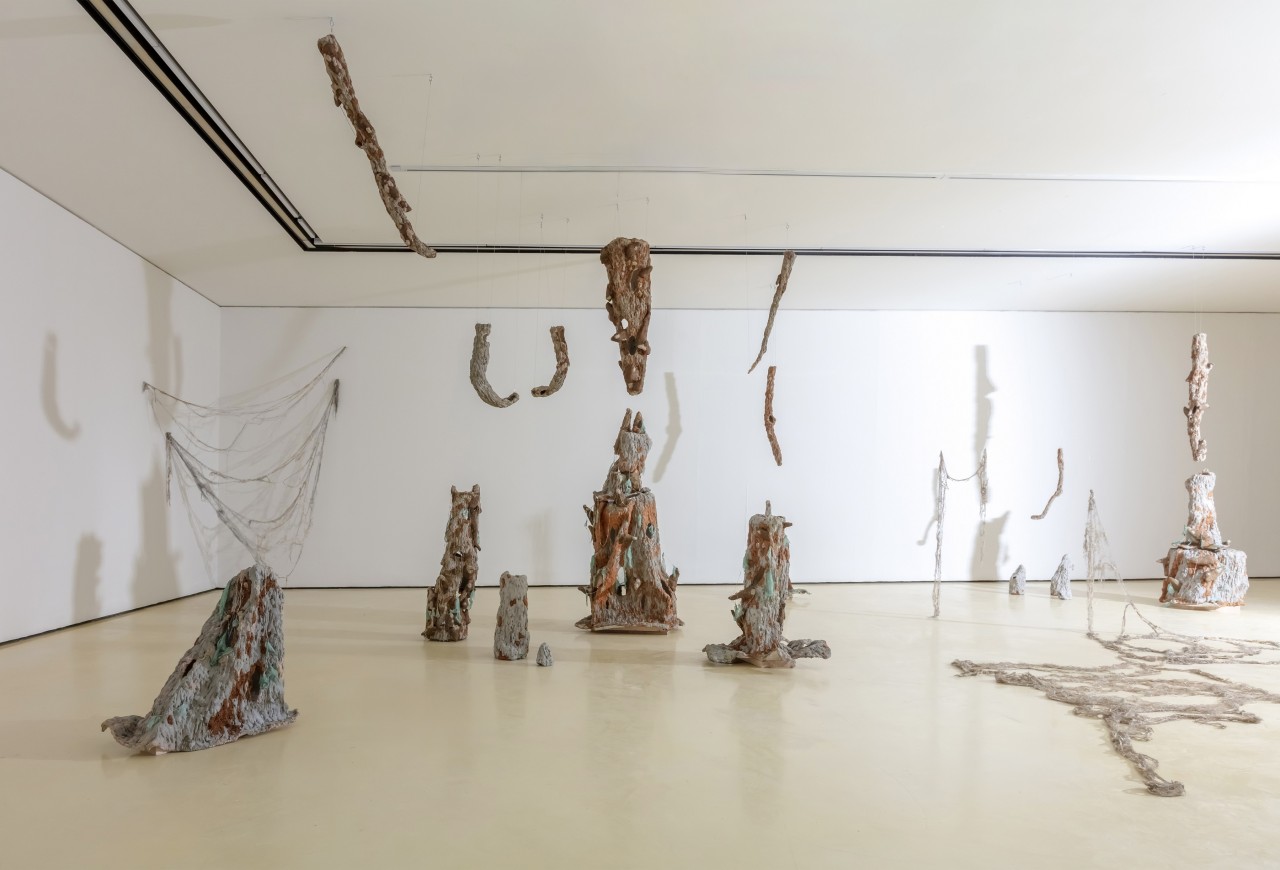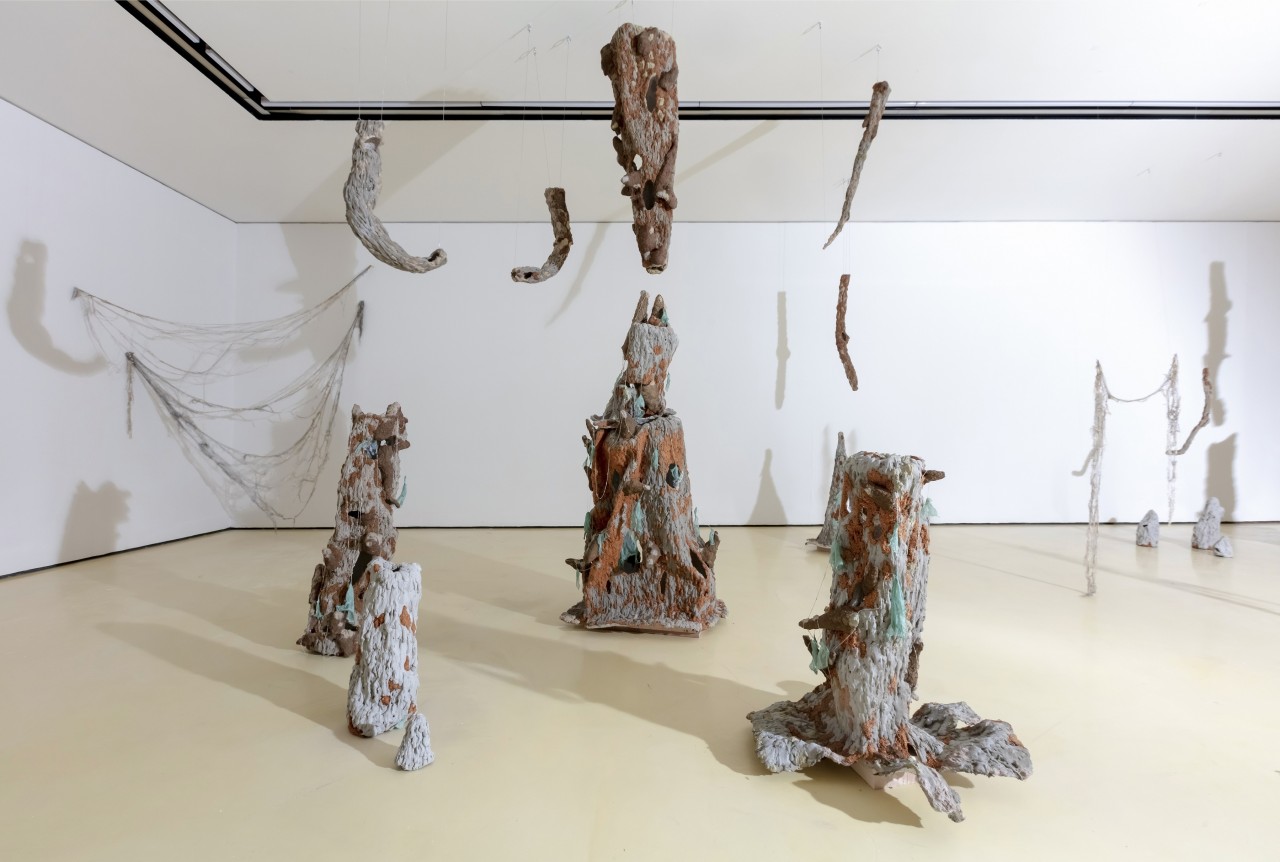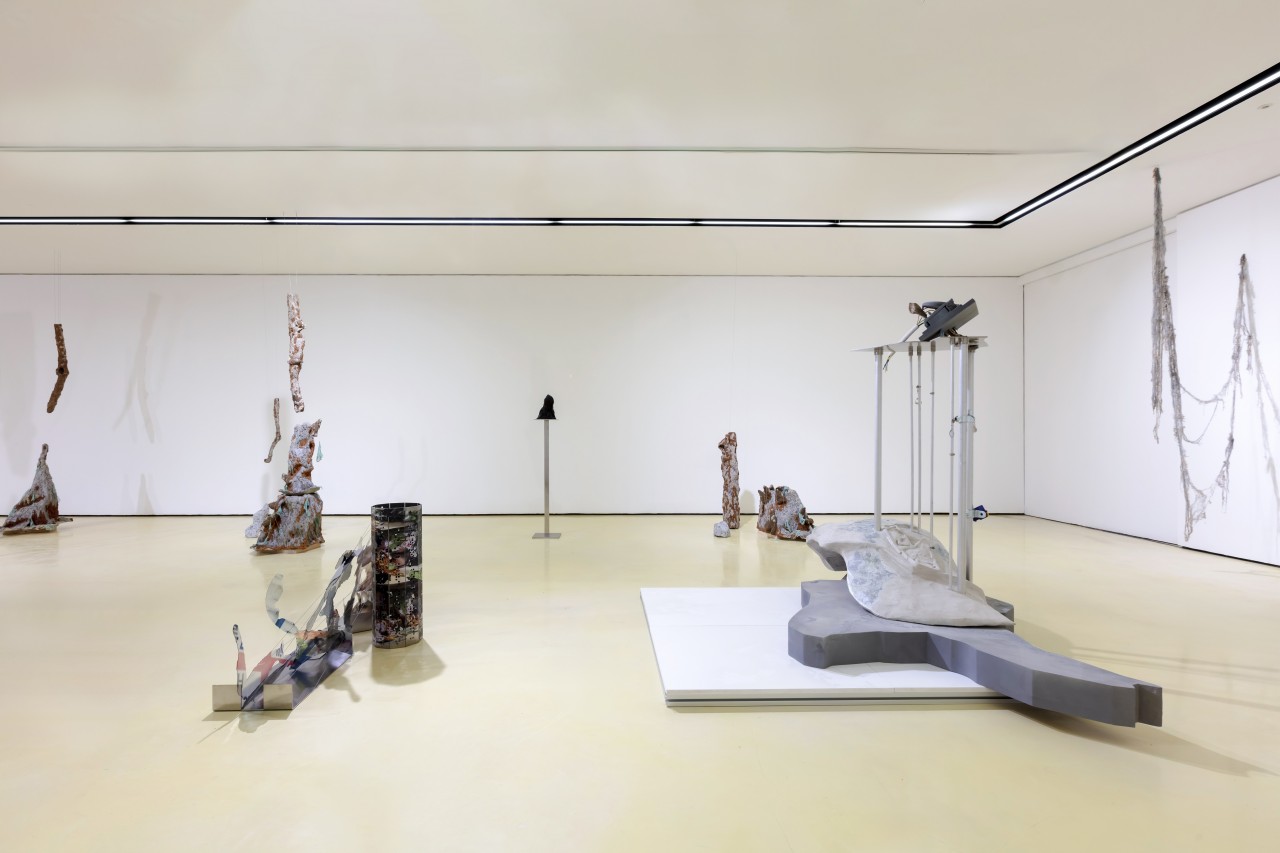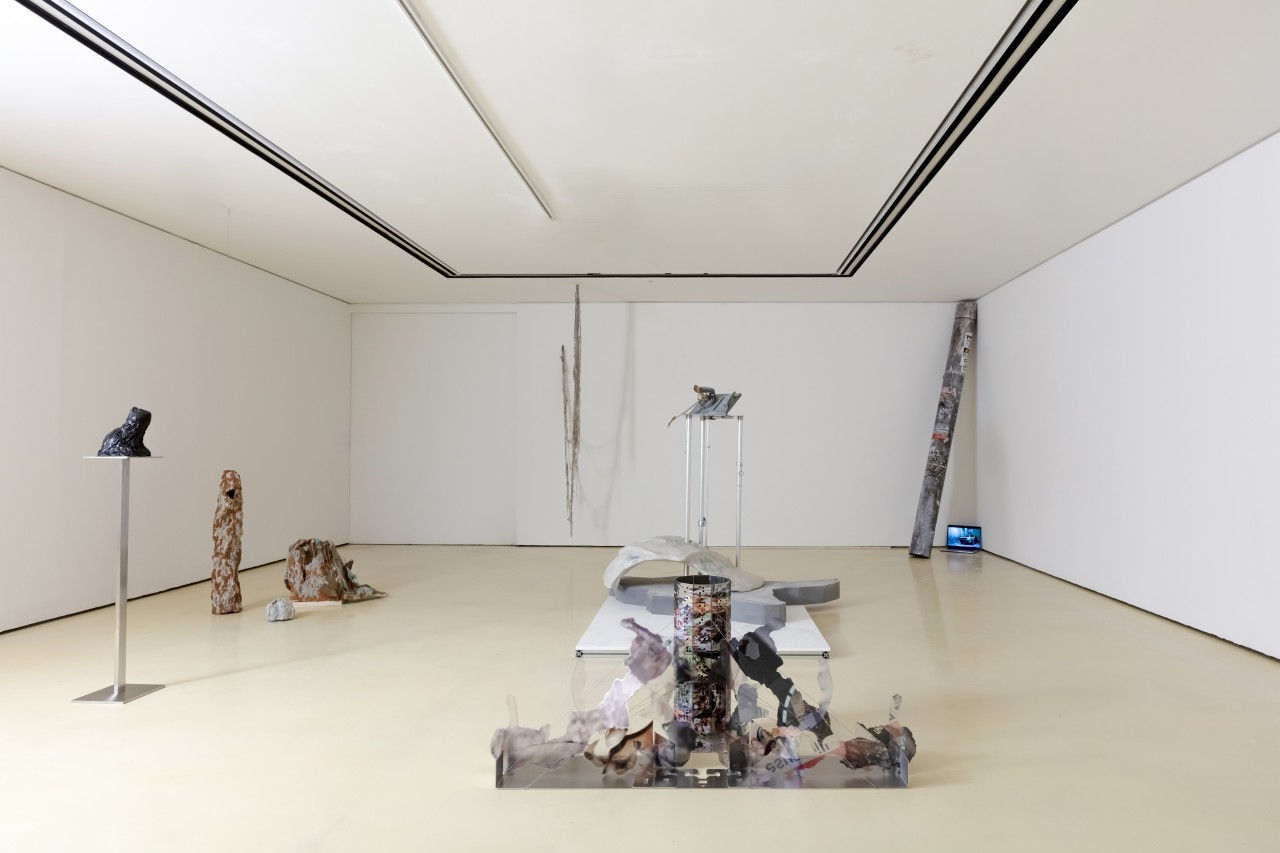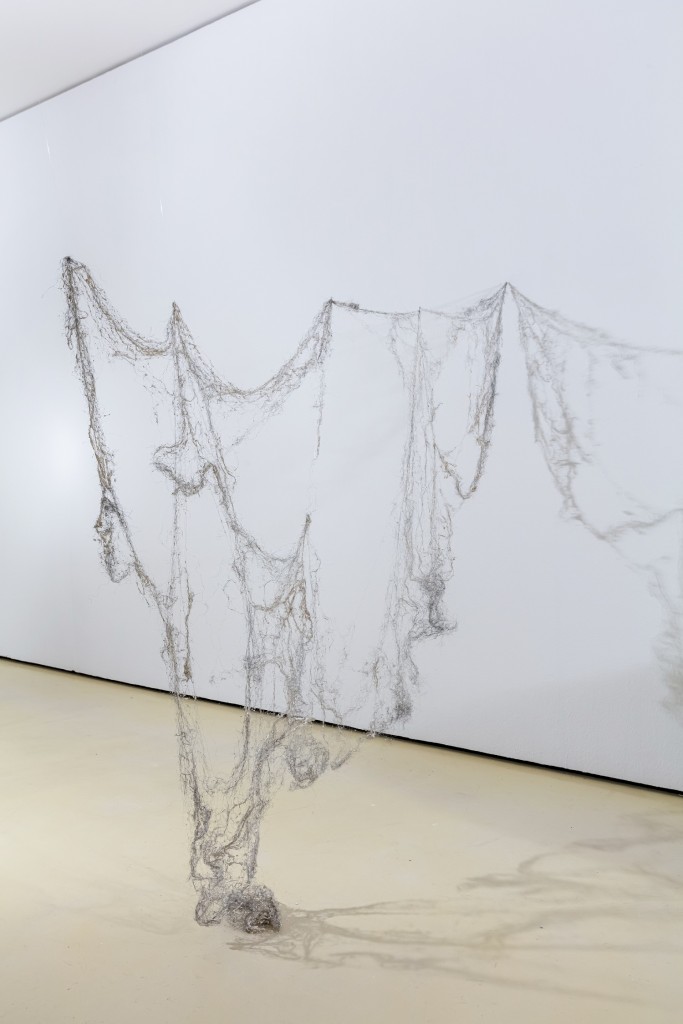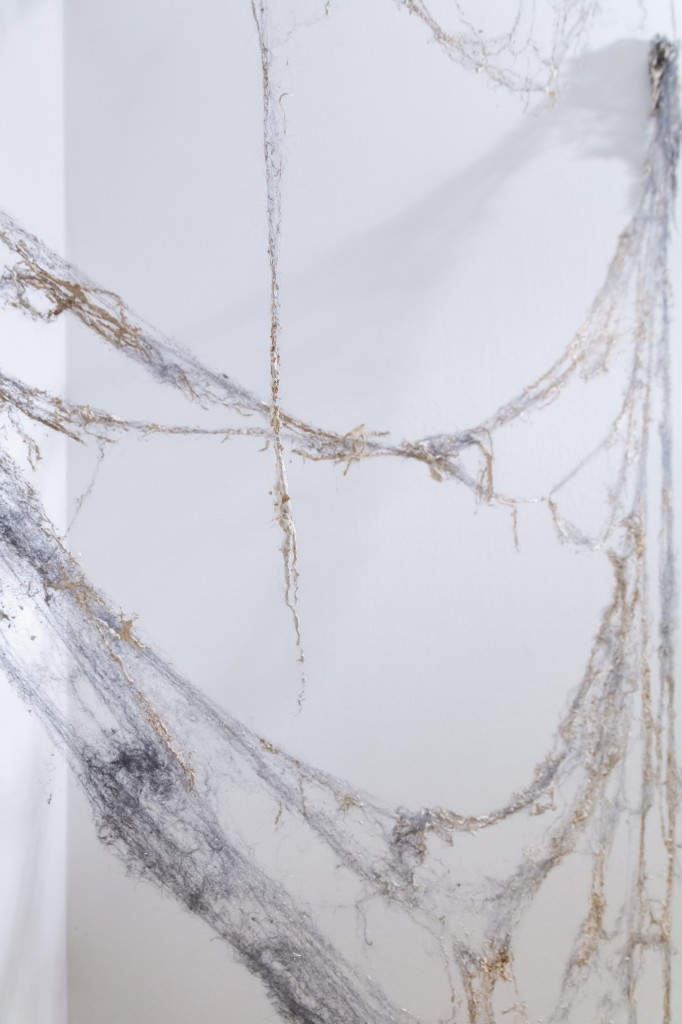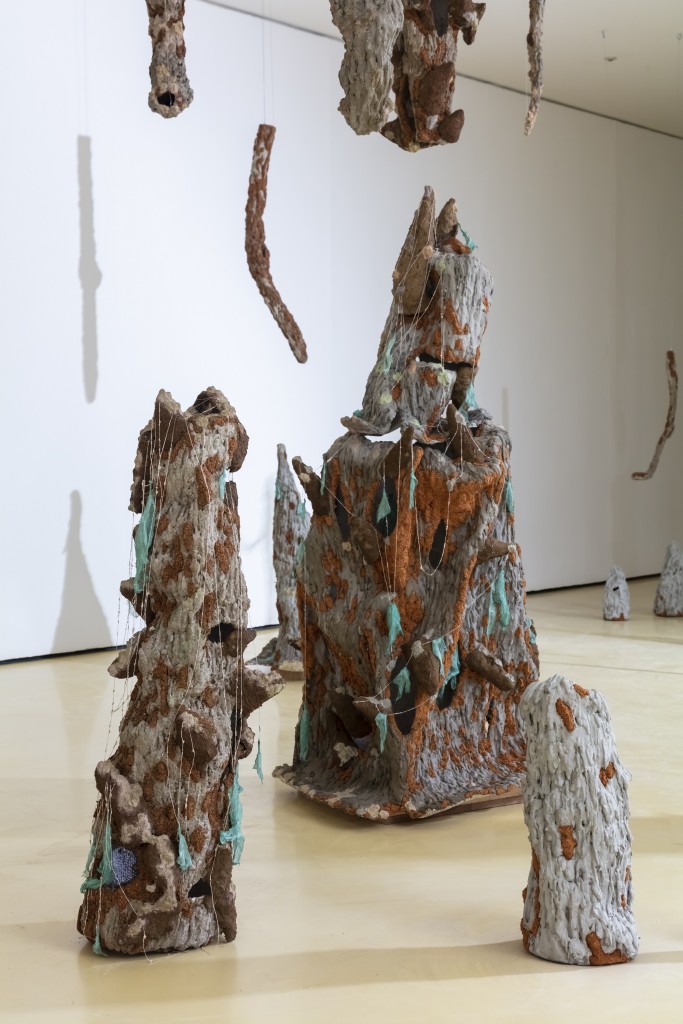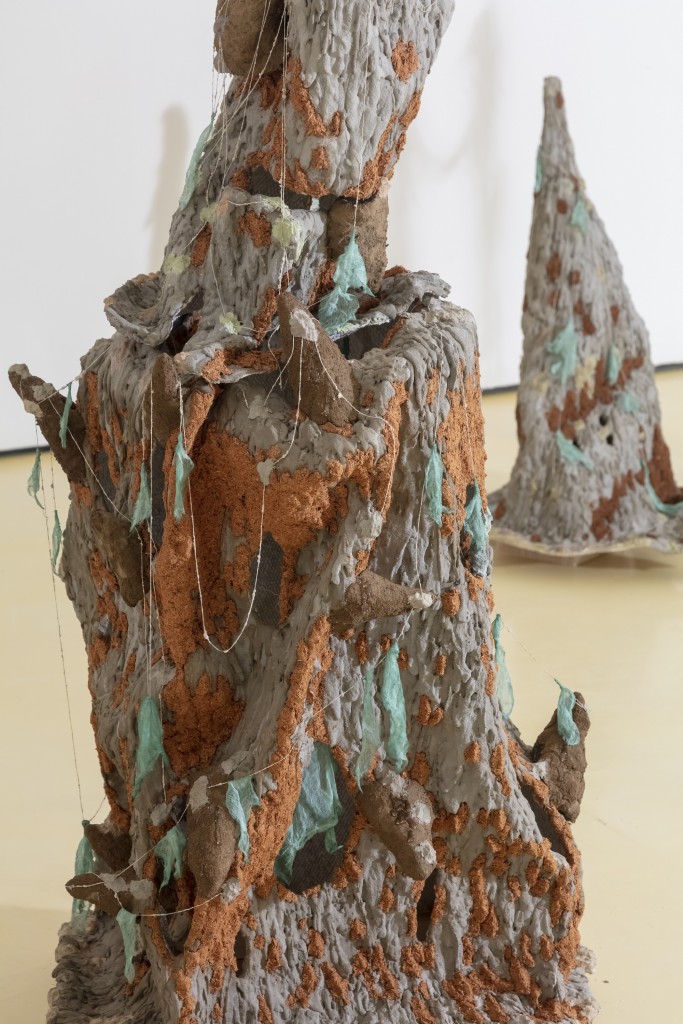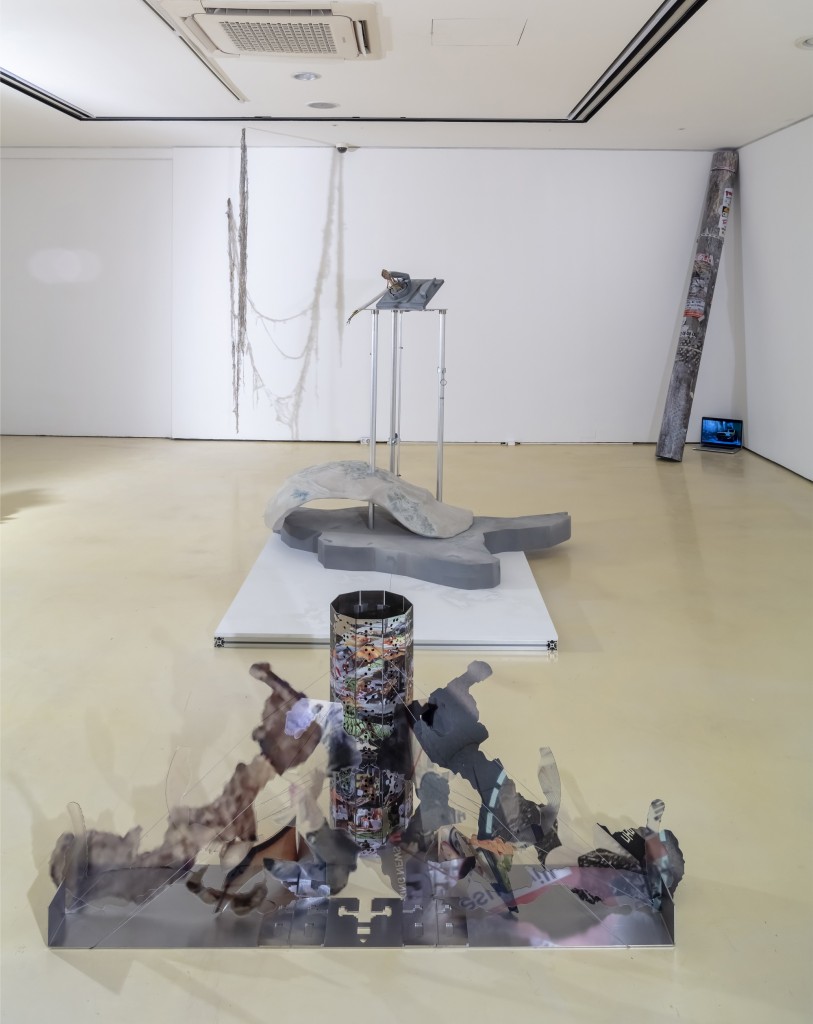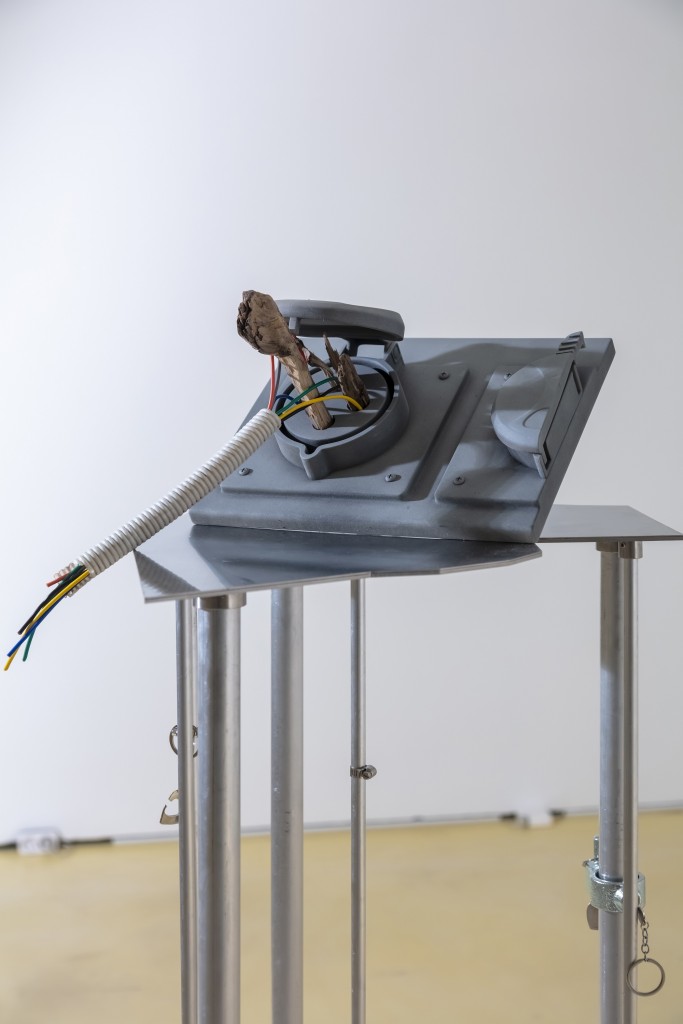Exhibitions
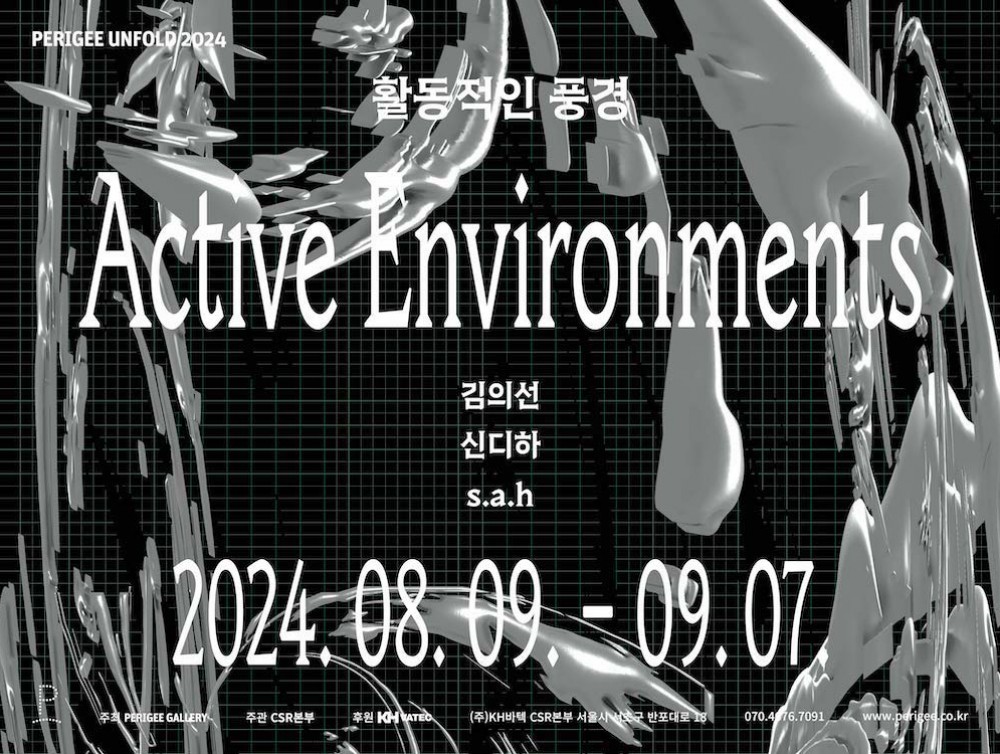
PERIGEE UNFOLD 2024
활동적인 풍경
2024.08.09. FRI ~
2024.09.07. SAT
<활동적인 풍경>
김명진 (페리지갤러리 큐레이터)
오늘을 살아가는 우리는 근미래에 대한 걱정에서 벗어나기 힘들다. 기후위기는 지금의 현실이며, 올 여름은 앞으로 있을 여름 중 가장 시원한 여름이라고 일컬어진다. 출생률은 계속해서 감소하고, 피부로 느끼지 못할지는 몰라도 생물종의 다양성 역시 감소하고 있다. 이제 디스토피아는 상상 속의 머나먼 미래가 아닌 근미래일지도 모른다. 이런 사실을 전혀 모르는 사람은 거의 없지만, 정확하게 알 수 있는 사람도 없다. 그러는 가운데 불안정성이 가까이 다가와 우리의 친구 노릇을 한다. 불안정성은 더 이상 예외적인(통제 가능한) 상황이 아니라 매일의 일기예보에서조차 숱하게 마주할 수 있는 현실이다. 바로 내일 지구의 환경이 획기적으로 변한다 해도 크게 놀랍지 않을 것이다. ‘활동적인 풍경’은 이처럼 더 이상 정지된 배경이나 안정적인 토대로 보기 어려운 활성화된 환경을 일컫는다. 또한 본 전시에서 다루는 풍경은 우리가 ‘자연’이라 칭해온 환경과 함께 오늘날의 세계를 형성하고 있는 디지털 미디어 환경을 포함한다.
폐허가 된 미래의 지구를 종종 상상해보곤 한다. 그 폐허는 가만히 멈춰 있기보다는 새로운 매커니즘을 형성하며 움직이게 될 것이다. 그곳에서 새로운 환경을 만들어갈 주체는 누구일까? 이 드라마의 주인공은 이제 더 이상 인간(만)이 아닐지도 모른다는 점에서, 풍경은 활동적이다.⑴ 물론 지금 이 순간에도 풍경의 드라마는 펼....
Active Environments⑴
Myungjin Kim (Curator of Perigee Gallery)
As we live for today, it is difficult for us to avoid worrying about the near future. The climate crisis is a current reality, and this summer is expected to be the coolest of the coming summers. Birth rates are steadily declining, and though we may not feel it on our skin, species diversity is also declining. Now, dystopia may not be a distant future of the imagination, but a near future. Few people are completely unaware of these facts, but no one can know them precisely. Meanwhile, instability is approaching and becoming our friend. Instability is no longer an exceptional (controllable) situation, but a reality that we can often encounter, even in daily weather forecasts. It would not be surprising if the Earth's environment changed radically tomorrow. "Active landscape" refer to such an activated environment that is no longer seen as a static background or stable foundation. The landscapes addressed in this exhibition include the digital media environment that shapes today's world along with the environment we have called “nature.”
....
김명진 (페리지갤러리 큐레이터)
오늘을 살아가는 우리는 근미래에 대한 걱정에서 벗어나기 힘들다. 기후위기는 지금의 현실이며, 올 여름은 앞으로 있을 여름 중 가장 시원한 여름이라고 일컬어진다. 출생률은 계속해서 감소하고, 피부로 느끼지 못할지는 몰라도 생물종의 다양성 역시 감소하고 있다. 이제 디스토피아는 상상 속의 머나먼 미래가 아닌 근미래일지도 모른다. 이런 사실을 전혀 모르는 사람은 거의 없지만, 정확하게 알 수 있는 사람도 없다. 그러는 가운데 불안정성이 가까이 다가와 우리의 친구 노릇을 한다. 불안정성은 더 이상 예외적인(통제 가능한) 상황이 아니라 매일의 일기예보에서조차 숱하게 마주할 수 있는 현실이다. 바로 내일 지구의 환경이 획기적으로 변한다 해도 크게 놀랍지 않을 것이다. ‘활동적인 풍경’은 이처럼 더 이상 정지된 배경이나 안정적인 토대로 보기 어려운 활성화된 환경을 일컫는다. 또한 본 전시에서 다루는 풍경은 우리가 ‘자연’이라 칭해온 환경과 함께 오늘날의 세계를 형성하고 있는 디지털 미디어 환경을 포함한다.
폐허가 된 미래의 지구를 종종 상상해보곤 한다. 그 폐허는 가만히 멈춰 있기보다는 새로운 매커니즘을 형성하며 움직이게 될 것이다. 그곳에서 새로운 환경을 만들어갈 주체는 누구일까? 이 드라마의 주인공은 이제 더 이상 인간(만)이 아닐지도 모른다는 점에서, 풍경은 활동적이다.⑴ 물론 지금 이 순간에도 풍경의 드라마는 펼쳐지고 있다. 세계-건설하기는 다종의 상호작용을 수반하는 작업이다. 이를테면 땅속 곰팡이는 죽은 나무를 분해해 새로운 생명을 위한 영양분을 만들며 세계를 건설하는데, 이런 일은 인간이 수행할 수 없다. 뿐만 아니라, 인간이 생성한 인공적인 세계는 자연이 침투할 수 없는 고유한 세계가 아니다. 오늘날 도시에 거주하는 새들은 나뭇가지와 비닐 조각들을 섞어 둥지를 만들기도 하고, 산호는 안에 미세플라스틱이 있는 채로 자라난다. 이처럼 자연은 인공적인 것과 분리된 환상의 세계가 아닌 우리가 만든 풍경을 포함한 환경이 되어간다. 이제 우리는 끊임없이 다른 존재들과의 ‘마주침’을 인지하고 받아들이는 연습을 해야 할 것이다.⑵ 여기에는 상상력이 필요한데, 미술은 이러한 상상을 위한 하나의 좋은 방법이 된다.
신디하는 동식물을 비롯한 비인간 존재의 건축술에 관심을 두어왔으며, 더 나아가 스스로 건축하는 물질을 상상한다. 이번 전시에서 그는 석회동굴과 오래된 콘크리트 건물을 겹쳐 바라본다. 건물 지하에서 시멘트 종유석과 석순이 자라나는 현상은 작가의 상상일 뿐 아니라 실제로 존재하는 사례이기도 하다. ‘인공의 돌’인 시멘트와 콘크리트는 석회암을 주원료로 합성해 만든 물질이며, 석회암에 든 탄산칼슘이 물에 녹았다가 굳는 과정에서 동굴이 만들어지듯이 누수가 계속되는 건물에서도 종유석과 석순이 만들어질 수 있는 것이다. 작가는 이런 현상을 “물질이 스스로 만드는 건축”이자 “주체적이고 능동적인 물질의 행위”로 바라본다.⑶ 건물은 겉보기에 단단하게 고정된 것으로 보이지만, 지속적으로 관리하지 않으면 인간의 의도 너머로 움직이는 물질이 되곤 한다. 물에 의해 녹고 부식되거나, 작은 달팽이에 의해 표면이 갉아먹힐 수도 있다. 신디하는 인간이 사라진 세계에 남겨진 콘크리트 건물이 다른 비인간 존재들과 끊임없이 마주치며, 탄산칼슘을 섭취하기 위해 모여든 달팽이의 군락지가 되어가는 장면을 상상한다.⑷ 이 장면에서 우리는 쓰임을 다하고 방치된 물질이 스스로 무언가를 건축하고, 나아가 비인간 생명의 새로운 둥지가 될 가능성을 품고 있음을 바라보게 된다.
김의선은 그물망을 통해 서로 다른 물질들을 마주치게 하고, 자신과 타인의 작업 사이를 연결하는 환경을 만든다. 그는 유기적인 재료 연구를 해오면서 예민하고 가변적인 재료를 주로 다뤄왔으며, 이번에는 최소한의 지지대를 두어 이들을 잠시나마 손에 걸리는 것으로 만들고 싶었다고 한다. 이번 작업에서는 묽은 흙이 철 섬유로 만들어진 망 사이에 비집고 들어가 서서히 건조되면서 조형을 형성한다. 흙은 그물망의 어떤 곳에서는 실타래처럼 가느다랗게, 다른 곳에서는 조금 더 두껍게 뭉쳐져 덩어리를 만들면서 유기체의 형태처럼 뻗어 나간다. 떠다니는 물질들은 얇게 형성된 구조물의 어느 좌표에 매달려 뭉쳐서 일시적으로 모습을 드러내며, 뭉쳐진 상태는 사라짐을 유예하고 시간을 느리게 흐르도록 만든다. 이러한 풍경을 마주하다 보면 미묘하지만 ‘늘어진 긴장’을 느낄 수 있게 된다. 미세하고 지속적인 변화가 일어나는 이 장면에는 우리의 시각으로 충분히 감각할 수 없는 활동들이 내재되어 있기 때문이다.
근미래의 세계를 감각하는 또 다른 방식은 온라인을 매개하는 것이다. 이미 우리의 현실에서 온라인 세계와 물질 세계는 완전히 분리되어 있지 않으며 서로 영향을 주고받는다. 또한 두 세계 모두 빠른 시일 내에 디스토피아를 만들어낼 수 있는 가능성을 보여주고 있다. 이미지의 세계와 현실 세계가 중첩되는 지점을 주의깊게 사유해 온 s.a.h(심유진, 한지형)는 온라인 게임을 매개로 이미지 과부하 시대의 폐허를 상상한다. 그들은 ‘유저에게 주어진 너무 높은 자유도로 인해 통제 불능 상태에 도달한 오픈 월드(open world) 게임’을 제시하는데, 이를 인간에 의해 활발하게 개발되면서 점점 우리에게 불리한 환경이 되어가는 지구와 은유적으로 겹쳐 볼 수도 있다. 이 게임은 다수의 사용자들이 게임 속 세계에 자유로운 변형을 가하자 모든 키(key)가 동시에 활성화되고, 결국 어떤 기능도 수행하지 못하는 상태에 이르게 된다. 이를테면 공격과 방어의 기술이 함께 발현되는 오류를 보여주는 조형물은 지나치게 활성화된 상태가 도리어 정지 상태에 가까워지는 역설을 나타낸다.
또한 이러한 상황은 동시에 존재하는 너무 많은 온라인 콘텐츠들의 상태와 겹쳐진다. s.a.h는 이미지의 영향력이 과도해진 세계에서 하나의 이미지가 여러 방식으로 소비되고 플랫폼 전체를 점유하며 감염시켜가는 과정을 드러내고자 한다.⑸ 이번 작업의 소재가 되는 것은 익명의 사용자들에 의해 후가공 및 ‘짜깁기’되어 음모론, 열애설 등의 시초가 되고, 다양한 시나리오와 세계관을 형성하며 흘러다니는 바이러스적인 이미지들이다. 끊임없이 생성되고 쌓이고 갱신되는 이미지들은 여러 개의 진실이 공존하는 다수의 세계를 구성하는 재료이자, 지나치게 활성화된 세계의 복잡성을 드러내는 또 다른 지표가 된다.
이번 전시의 작업들이 공유하고 있는 키워드는 ‘세계 (만들기)’이다. 현 세계의 면면을 감각하고 근미래를 상상하며, 폐허가 되어가는 풍경을 ‘저 너머’가 아닌 현실로 직시하고 그 폐허에서 나타나게 될 새로운 움직임을 가늠해보고자 했다. 그리고 세 작가(팀)의 작업들은 서로가 공유하는 미감을 기반으로 마주치고 얽히며 풍경을 이루듯 연출하고자 했다. 전시를 준비하며 우리가 함께 해온 것은 온전히 홀로 존재하는 내가 없다는 것을 알아차리고, 환경의 일부를 이루는 구성원이자 타자와 얽힌 존재로서 나를 감각하는 연습이었다. 이러한 연습은 오늘날 우리가 피할 수 없는 것이자 함께할 미래를 조금 더 연장할 수 있는 단서가 될 것이다.
────────────
⑴ ‘풍경은 활동적’이라고 할 때, 참고가 된 글의 원문은 다음과 같다. “풍경은 역사적 행위의 배경이 아니다. 그것은 그 자체로 활동적이다. 풍경이 형성되는 것을 지켜보면 세계 형성에서 인간이 살아 있는 다른 존재에 합류한다는 사실을 보게 된다.” 애나 르웬하웁트 칭, 노고운 옮김,『세계 끝의 버섯』(현실문화, 2023), 271쪽.
⑵ ‘마주침’은 생존하기 위해 항상 다른 존재와 관계를 맺어야 하는 상황과 관련된다. 일상적으로는 발목이 삐었을 때 걷기 위해 튼튼한 막대기를 의지하는 상황으로부터, 생태적으로는 (소나무와 송이버섯이 어울려 지내는 관계처럼) 다른 생물종과의 변형적인 관계를 맺는 상태를 포괄적으로 일컫는다. 이는 애나 칭이 말하는 ‘불안정성’의 속성이기도 하다. “불안정성은 타자들에게 취약한 상태를 말한다. 예측 불가능한 마주침은 우리를 변모시킨다.” 앞의 책, 51, 66, 85쪽 참고.
⑶ 신디하 작업 노트(2024) 참고.
⑷ 실제로 야생의 달팽이들은 탄산칼슘을 필수적으로 섭취해야 하기 때문에 돌, 나무 껍질, 혹은 시멘트로 만들어진 구조물을 삶의 터전으로 삼곤 한다.
⑸ s.a.h 작업 노트(2024) 참고.
Myungjin Kim (Curator of Perigee Gallery)
As we live for today, it is difficult for us to avoid worrying about the near future. The climate crisis is a current reality, and this summer is expected to be the coolest of the coming summers. Birth rates are steadily declining, and though we may not feel it on our skin, species diversity is also declining. Now, dystopia may not be a distant future of the imagination, but a near future. Few people are completely unaware of these facts, but no one can know them precisely. Meanwhile, instability is approaching and becoming our friend. Instability is no longer an exceptional (controllable) situation, but a reality that we can often encounter, even in daily weather forecasts. It would not be surprising if the Earth's environment changed radically tomorrow. "Active landscape" refer to such an activated environment that is no longer seen as a static background or stable foundation. The landscapes addressed in this exhibition include the digital media environment that shapes today's world along with the environment we have called “nature.”
We often imagine the Earth of the future in ruins. These ruins will not stand still but will form new mechanisms and continue to move. Who will be the agents creating this new environment? The protagonist of this drama may no longer be solely human, which makes the landscape active.⑵ Indeed, the drama of the landscape is unfolding even at this very moment. World-building is a task that involves the interaction of multiple species. For example, underground fungi decompose dead trees to create nutrients for new life, a task humans cannot perform. Moreover, the artificial world created by humans is not a unique world impenetrable to nature. Today, birds living in cities make nests mixing twigs and pieces of plastic, and corals grow with microplastics inside them. In this way, nature is becoming an environment that includes the landscape we have created, rather than a separate, imaginary world. Now we must constantly practice recognizing and accepting encounters with other beings.⑶ This requires imagination, and art is one good way to foster such imagination.
Sindiha has been interested in the architecture of non-human entities, including plants and animals, and further imagines self-constructing materials. In this exhibition, she juxtaposes limestone caves and old concrete buildings. The phenomenon of cement stalactites and stalagmites growing in the basements of buildings is not only a product of the artist's imagination but also a real occurrence. Cement and concrete, being “artificial stones,” are materials synthesized using limestone as the main raw material, and just as calcium carbonate in limestone dissolves in water and solidifies to form caves, continuous leakage in buildings can also lead to the formation of stalactites and stalagmites. The artist views this phenomenon as "architecture created by materials themselves" and "the autonomous and active behavior of materials."⑷ Although buildings appear solidly fixed, if not continuously maintained, they can become materials that move beyond human intention. They can dissolve and corrode in water, or their surfaces can be gnawed away by small snails. Sindiha imagines scenes where concrete buildings left in a world without humans constantly encounter other non-human entities, becoming colonies of snails gathered to consume calcium carbonate.⑸ In these scenes, we observe how materials, having fulfilled their use and left unattended, construct something on their own, and potentially become new nests for non-human life.
Euysun Kim creates an environment where different materials meet through a network, connecting her work with that of others. Having researched organic materials, she has mainly dealt with sensitive and variable materials, and this time she wanted to make them tangible with minimal supports. In this current work, diluted clay seeps into the mesh made of steel fibers, slowly drying and forming a shape. In some parts of the mesh, the clay stretches out thinly like threads, while in others, it clumps together more thickly, spreading out like an organism. The floating materials cling to various points of the thinly formed structure, temporarily revealing themselves as they clump together, delaying their disintegration and making time flow more slowly. Encountering this landscape allows one to feel a subtle but “lingering tension.” This scene, with its minute and continuous changes, contains activities that cannot be fully perceived by our senses.
Another way to perceive the near-future world is through the mediation of virtual worlds. In our current reality, the online and material worlds are not entirely separate; they influence each other. Both worlds also show the potential to create dystopias in a short period. s.a.h(Sim Eugene, Han Jihyung), who have been carefully contemplating the intersection of the image world and the real world, imagine the ruins of an era of image overload through the medium of online games. They present an "open world game that has reached a state of uncontrollability due to the excessive freedom given to the user," which can metaphorically be compared to Earth, increasingly becoming an adverse environment due to active human development. In this game, as many users freely modify the in-game world, all keys become simultaneously active, eventually leading to a state where no function can be performed. For instance, the sculptures that exhibit an error where both attack and defense skills are activated together demonstrate the paradox of an overly activated state becoming closer to a state of paralysis.
Additionally, this situation overlaps with the state of too many coexisting online contents. s.a.h aims to reveal the process by which a single image in a world of excessive image influence is consumed in various ways, occupying and infecting the entire platform.⑹ The materials for this work are images that are post-processed and “stitched together” by anonymous users, becoming the origins of conspiracy theories, romance rumors, and more, forming various scenarios and worldviews as they spread like viruses. These constantly generated, accumulated, and updated images are materials that constitute multiple worlds where multiple truths coexist, and serve as another indicator revealing the complexity of an overly activated world.
The keyword shared by the works in this exhibition is 'world-making'. It senses the aspects of the current world and imagines the near future, directly confronting the decaying landscape as a reality rather than something “beyond”, and attempts to gauge the new movements that will emerge from this ruin. The works of the three artists (teams) aim to create a landscape by encountering and intertwining with each other based on the aesthetic sensibilities they share. In preparing for the exhibition, what we have come to realize is that there is no “self” that exists entirely alone, and this has been an exercise in sensing oneself as a member of the environment and an entity entangled with others. This practice is something unavoidable today and will serve as a clue to extending the future we will share a little further.
────────────
⑴ The exhibition title "Active Environment" was derived from Anna Lowenhaupt Tsing's "Active Landscape."
⑵ “Landscapes are not backdrops for historical action: they are themselves active. Watching landscapes in formation shows humans joining other living beings in shaping worlds.” Tsing, Anna Lowenhaupt. The mushroom at the end of the world: On the possibility of life in capitalist ruins (Princeton, N.J: Princeton University Press, 2015), 152.
⑶ “Encounter” relates to the situation where one must always form relationships with other entities to survive. This ranges from everyday situations, like relying on a sturdy stick to walk when you've sprained your ankle, to ecological relationships, such as the transformative relationships between different species (like the coexistence of pine trees and matsutake mushrooms). This is also the property of ‘precarity’ that Anna Tsing talks about. “Precarity is the condition of being vulnerable to others. Unpredictable encounters transform us.” Ibid., 20.
⑷ Sindiha’s Artist Statement (2024)
⑸ In fact, wild snails often make their homes on stones, tree bark, or cement structures because they must consume calcium carbonate.
⑹ s.a.h’s Artist Statement (2024)



